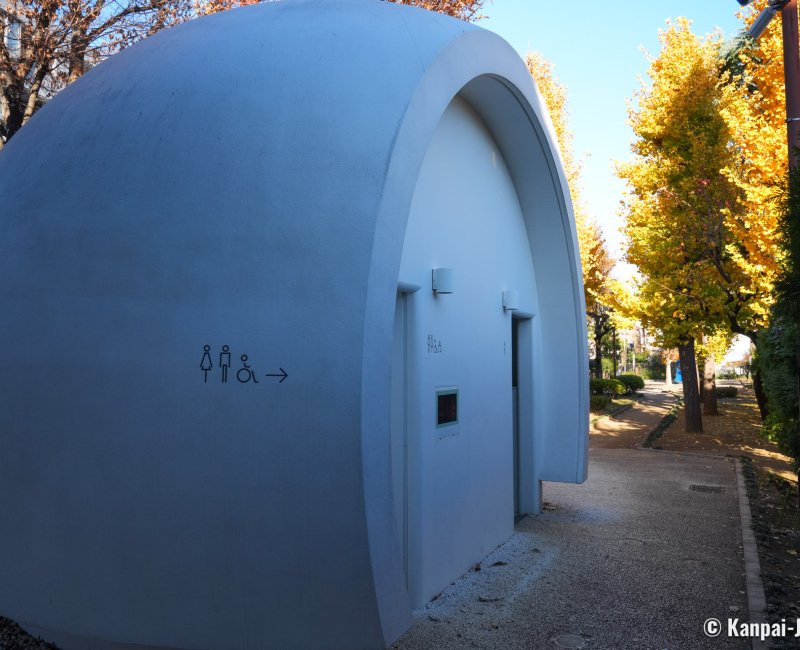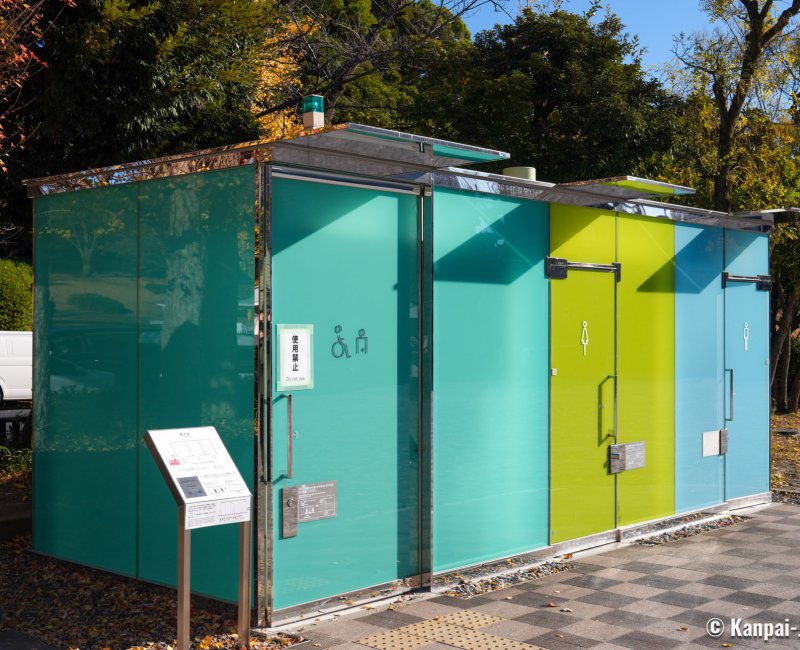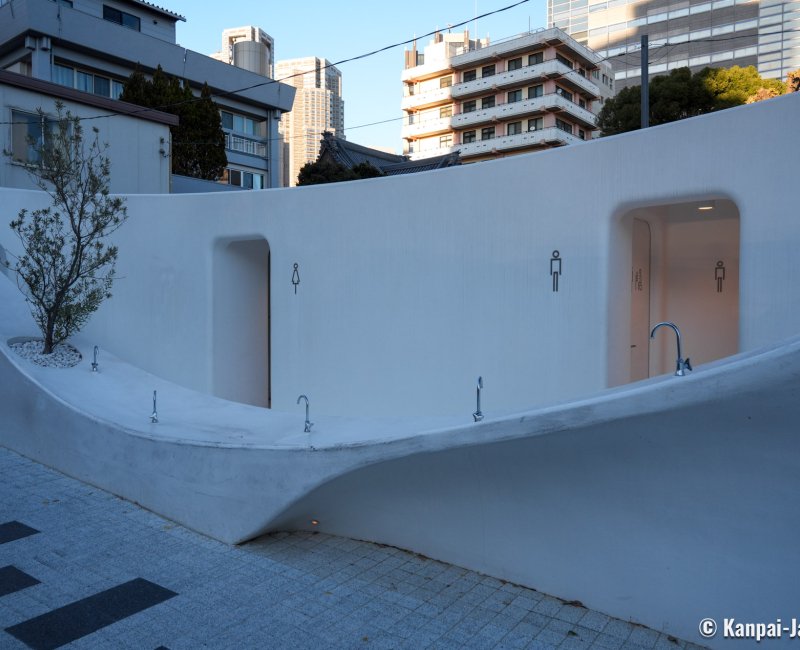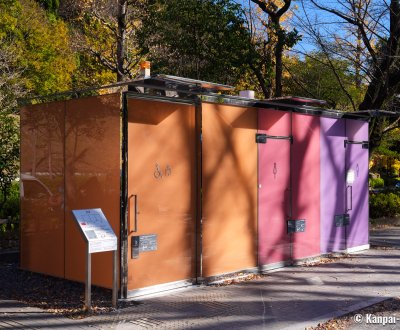The Tokyo Toilet
The 17 Architectural Toilets in Shibuya
The Tokyo Toilet is an embellishment project led by well-known contemporary architects targeting 17 public toilet facilities located in Tokyo’s Shibuya ward. Each of them displays a unique design, transforming the buildings into actual tourist attractions.
Started in 2020 and finalized in 2023, The Tokyo Toilet is the name of the architectural project that led to the renovation of 17 public toilets 🚽 located in Shibuya ward, in the west side of Tokyo’s center. This project falls within the scope of omotenashi, that is to say the deep-rooted hospitality culture of Japan. This omonetashi is particularly noticeable in the free restrooms acclaimed for their high level of cleanliness.
Japanese people willingly use train 🚅 stations or malls’ public restrooms and are generally very satisfied with this service. However, they feel an issue when it comes to exterior toilets on the public space. These specific restrooms are seen as dirtier and less secure than the others, especially in the eyes of women. Associated with the NGO The Nippon Foundation, Shibuya city hall has selected 17 of its public toilets bearing such negative image in the Japanese’s minds, to have them transformed into artworks by the vision of well-known architects.

An unconventional and popular artistic project
To ensure a successful renovation, the conception of the artistic toilets has been entrusted to 16 internationally renowned architects. Among them, a few foreign masters of design such as Marc Newson (to whom we owe the Apple Watch), but also a large majority of Japanese professionals like Shigeru Ban, Tadao Ando, Fumihiko Maki and Toyo Ito. The 4 of them have been awarded the Pritzker Price for their work. They were tasked with the creation of infrastructures that are open to diversity and that can welcome any individual without distinction. Every equipment has disabled access, includes a baby-changing room and a child-friendly toilet seat. Several of them also provide medical devices suitable for people who carry an ostomy pouch. Beyond its practical aspects, the Tokyo Toilets project also leveraged the architects’ creativity to transform these facilities into places boasting a specific aesthetic.
The mission seems accomplished as the project has been earning a rising fame among foreign travelers since the opening of the first renovated toilets, especially thanks to:
- The 2 toilets designed by architect Shigeru Ban, made with colored and transparent glass, which seems counter-intuitive for a place requiring a high-level of privacy.
- The eulogistic critics received by Wim Wenders’ movie Perfect Days. The story follows the daily life of Hirayama, a cleaning operative of Shibuya’s toilets. The main actor, Koji Yakusho, has been awarded Best Actor at the 2023’s edition of the Cannes Film Festival for this role.

Viral transparent toilets
The 2 transparent toilets created by Shigeru Ban are located near Yoyogi park, next to Inokashira-dori avenue.
- The first one is made of translucent glass colored in warm pink and orange shades, at Yoyogi Fukamachi mini-park; and,
- The second one displays a two-colored green and blue glass in Haru-No-Hagawa community park.
Both have become famous on social media thanks to their leading-edge technology, an unusual concept tested by the architect in 2019 in Switzerland. This precise technology allows the glass to turn opaque as soon as someone enters and locks the door thanks to an electric input. Thus, when empty or unlocked, the restroom’s interior can be seen from the street.
Despite its ingenuity, the system rapidly showed his limits as winter’s extreme temperature changes can disrupt its operation. Cold weather can indeed harden the particles that create transparency or opacity, causing a delay in the opacification of the walls and therefore a quite uncomfortable use. Consequently, the restrooms stayed transparent for several months and were only used as a photo spot for tourists. To fix this technical issue, Shibuya toilets’ maintenance council announced changing their configuration according to the seasons.
- Opacity is made permanent in winter, and,
- The installations’ initial functioning resumes in summer.

Discovering another side of Shibuya
The 17 installations of "The Tokyo Toilet" project are scattered in the streets of Shibuya. Looking for them creates an opportunity for an original visit of this ward, that includes both residential neighborhoods and very touristic areas around its eponymous train station and famous crossing. The artistic toilets are gathered in 3 main areas:
- Around Hatagaya station, the pretty white dome designed by Kazoo Sato and Disruption Lab Team can be admired at Nanago Dori Park. 4 other artistic installations are dispatched along the Keio Line tracks, between Sasazuka Greenway and Nishihara Itchome park.
- Around Yoyogi park, at the opposite side of Harajuku’s main entrance, you’ll find the two famous restrooms by Shigeru Ban, as well as 6 other public toilets, including the arched toilets imagined by Sou Fujimoto. Furthermore, Toyo Ito’s mushroom-like 3 cylinders-shaped toilet is located near the small Yoyogi-Hachiman Park.
- Around Ebisu station, 4 toilets of the architectural project are located next to each other. Among them, there is the giant and immaculate cube by Kashiwa Sato, placed at the west exit. A last installation designed by Tomohito Ushiro, is visible in the Hiroo area.
A few of the artistic restroom facilities can be included in a visit itinerary, and conveniently used whenever the need arises. It is also possible to make a full tour of the Tokyo Toilets: 2 hours are then necessary to visit either of Shibuya’s eastern or western side’s toilets; or half a day to complete the tour of the 17 restrooms. The Tokyo Toilet’s visit is recommended from mid-May to mid-October in order to enjoy all the features of the glass walls, since it is the time of the year when they can turn from opaque to transparent. The facilities are also lit-up at night, providing another nice view. Note, however, that you might not be the only photographer on site!
The restrooms are cleaned 2 to 3 times a day by a dedicated staff, and regularly inspected by professional consultants to guarantee their hygiene at any time of public use. In spite of that, you may find that the toilets located near Yoyogi Park might not be up to the high Japanese cleanliness standards during the busiest touristic periods.


